By Brandes Elitch
Photos by Dave Fetherston unless otherwise noted
In my previous article, I interviewed Gordon McCall, the organizer of the motorcycle show held every May since 2009 at the Quail Lodge Resort in Carmel Valley, California. It is generally regarded as the premier motorcycle concours in the country.
One of the emcees at the show is Paul d’Orleans, a well-known motorcycle writer (www.the vintagent@blogspot.com). Paul describes the ambiance of the show better than anyone. “The world of motorcycles has all the ingredients of a good, enriching drama: heroic deeds, political intrigue, design brilliance, cut-throat business practices, quirky characters, national tensions, cultural biases, Eros and Thanatos. When diving into the muck of motorcycle history, we find unexpected riches.”
Our photographer, Dave Fetherston, has captured some of the reasons why this show is so exciting, although we focused for this article just on the Italian bikes, given the focus of VeloceToday. (Dave is finishing a six part series on Bonneville, and one of the books will cover the history of motorcycle racing at Bonneville, so if your bike raced there, please contact Dave at salt@davidfetherston.com).
I must say that the sheer variety of the show is very compelling. There are over 300 bikes on display. Special categories included pre-1916 bikes, the 40th anniversary of the Superbike, BMW Classics, and extraordinary bicycles. Another feature is special displays of bikes owned by an individual or a private collection.
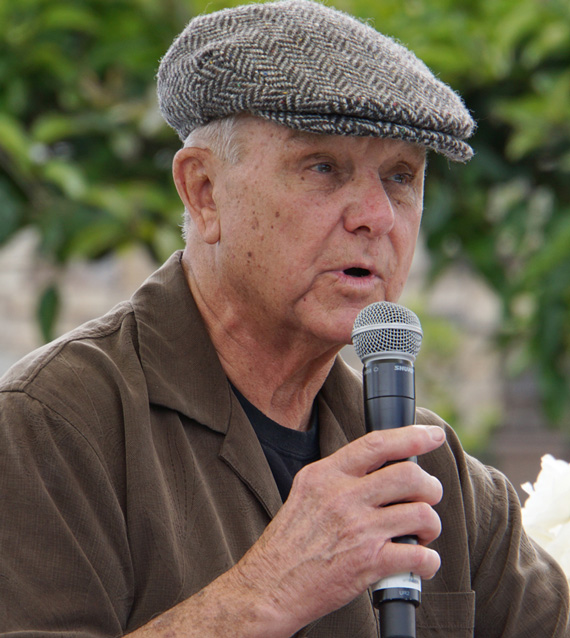
Gordon continued his popular “Legend of the Sport” feature, this year featuring Reg Pridmore. Reg is the three-time AMA Superbike National Champion. Reg took the microphone and was funny, well-spoken and humble. He stayed to sign autographs and pose for pictures too, and was a gracious guest.
I particularly enjoyed the Superbike display, as I have a Honda CB 750 myself. It turns out that there were three eras to the Superbike. First were the early races, won by BMW, Ducati, and Moto Guzzi. The second era saw Suzukis and Kawasakis dominate, and younger riders like Freddy Spencer and Eddie Lawson take the place of the senior men of the first era. In the third era, major manufacturers produced their own raceable production bikes. Today, as Kevin Cameron says, “Superbike racing remains a strong link to motorcycles we can buy at a dealership, and the strength of this connection remains of fundamental appeal.”
Five interesting motorcycles
The variety of the bikes on display was stunning, and no two people would choose the same favorite bikes. I chose five people to tell the story of their bikes which I found particularly interesting. Here they are.
Kevin Bracken brought his 900 Ducati, a long time labor of love for him. It is derived from a kit produced by Mark Henry, in collaboration with C&J in the late 1980’s. It started with a frame donated by a good friend. He added the last version of his racing Ducati bevel drive engine, helped by the late CR Axtell, who adapted the belt drive heads modified for bevel cam drive and heavily reworked for better air flow. This produced a much more powerful version of the original bevel drive engine. Extensive modifications were also done to the engine internals, including high compression pistons, plain bearing crankshaft, Vee-Two dry clutch, external oil filter, and Sachse ignition. The chassis uses the frame and the original tank, but all other parts are single sourced. This includes Marvic magnesium wheels, Wilbers shocks, reworked ZX-14 forks, Kosman triple clamps, and Brembo radial caliper brakes. Paint and seat are by Len Lochmiller of San Diego. The overall result is like a modern bike in terms of handling, suspension, and braking, but it has the torque of the bevel drive engine. Kevin’s goal was to create a modern version of his early eighties road racer to ride on the twisty back roads of San Diego. It took Kevin four years to complete it, but as he says, it is never really done. It has won two Best of Show awards, and appeared in the Oct. 2009 issue of Cycle World. He also won the Ducati SuperBike Concorso in 2008 at Laguna Seca, resulting in a trip to Italy for Kevin and his wife, courtesy of Ducati N.A.
Now for something completely different. If you have attended the Grand National Roadster show, or any other big custom car shows, you are accustomed to seeing some pretty amazing creativity, and there was one bike at this show that absolutely, positively fit that category: Calin Senciac’s Moto Guzzi bicycle-inspired cruiser. Calin’s idea was to build a bike around a Moto Guzzi V11 race motor, and have it look like an old Schwinn cruiser. He named it “Schwein” (a play on words, with no further comment needed). The motor specifications are as follows: Mike Rich forged pistons, Carillo rods, Black Widow valves, titanium retainers, lightened flywheel rebalanced for 105 hp. It revs at about a thousand RPM more than a standard bike, and is good for 135 mph! There is no gas tank – 2.5 gallons is held in the frame. Cables are hidden in the frame. All electrics and hydraulics are hidden in the handlebars. The mirror stems double as the reservoirs for the brake and clutch fluid. The pedals work as a shifter and brake pedals. There is no ignition key; the proximity fob does that. The hidden rear suspension is completely functional, made out of carbon composite leaves, with a lever type adjustable damper. It was done in his shop in downtown L.A., called Imagine Vehicles Intl. (www.imaginevehicles.com) – frame, handlebars, seat, swingarm, brake rotors, intake, and exhaust. It recently took the People’s Choice award at the Progressive Long Beach bike show, and undoubtedly will accrue a few more in the future.
Richard Kendall bought his 1977 Laverda Jota three years ago. It dates from the time he went to the famous biker’s cafes a Sherburn-in-Elmet, back in the UK. He remembers the first time he saw one. “I could not have been more in awe of a device if the starship Enterprise had landed in front of me. The bold colors, and the muscular tank and simple design made it an object of deep yearning. Its racing heritage, exotic Italian styling, and world-beating top speed of 140 mph, unthinkable then for a production bike, cemented it as a must-have bike.” The Jota is a 1000 cc triple; the name was taken from the Spanish dance in triple time. The UK importers were the Slater Brothers, who gave the Jota its added performance and unique name. After studying the Laverda Forum (a superb resource), he found it on Craigslist. He persuaded his wife to leave the house immediately, get a rental truck, and drive to Ventura. The seller was a surfer dude who had seventy bikes in the house, scattered between the hallways, living room, and family room. The bike hadn’t run in ten years and had the wrong tail, but he saw the original registration from 1977 with the name Jota on it and that convinced him to get it. He has dismantled the whole top end and pretty much had the entire bike apart except for the gearbox, replacing all the gaskets, o-rings, lubricants, rings, chains, etc. Wolfgang Haerter in Nakusp BC was a big help with advice and parts. As for riding it, he says, “The gear shifting is an acquired art form, but on song and in long sweeping corners it’s like riding a freight train. Sometimes I just look at it in the workshop for a few minutes and get almost as much pleasure looking at the thing rather than riding it!”
Robert Abbott showed his 1983 Moto Guzzi Le Mans III. Here is his story.
“It’s been 30 years since my buddy Neil Reno and I first sped across the Texas backroads, side by side on our twin 1983 Moto Guzzi Le Mans. I moved to California in 1987, and sold my bike in 1993. But Neil and I kept in touch over the years and I travelled to Houston often. In 2003, we were visiting another old friend, Mike Haven, at MPH Cycles, and I could not believe my eyes: there in the parking lot awaiting service was my 1983 Le Mans, which had found its way back home to Texas. Neal developed bone cancer, but he mustered the strength to gather a group of old friends at his Houston home, reminiscing, trading riding stories, and showing off his prized collection of Moto Guzzis neatly lined up along the walls of his garage. He was selling his bikes one by one to pay the medical bills. I bought his ‘83 Le Mans III, the twin of the bike I had sold eleven years earlier, and rode it back home to California. Neil passed away soon after that visit, and again I traveled back to Houston to bid a final farewell to my dear friend. Shortly after my return, an envelope arrived in the mail from Neil’s sister, with a check for $3000 made out to me, reimbursement of my purchase of his bike. Neil had willed it to me. Today, it sports a fresh Ferrari-red paint job, with the plate reading ‘Renos 83.’ I ran it on the Bonneville Salt Flats in 2012, topping out at 122 mph. Reno’s ‘83 continues to be a labor of love and the last vestige of a once-in-a-lifetime friendship.”
The word according to Michael LaFountain: “The project started seven years ago when I came across a photo on the Internet of a 1967 W1R Kawasaki—one of the first racing Kawasaki bikes made. For me, to discover a new road racer is quite a treat. I tried to learn as much as I could but unfortunately there is almost no literature on it and only one photo exists of this mystery machine. After studying the frame and engine of the much more common Kawasaki W1650 I realized the numerous similarities it shared with the Matchless G45, one of my all-time favorite road racers. Shortly after, the concept was born, to build a tribute to the elusive W1R yet at the same time fill in the missing pieces with one of the most iconic race motorcycles in history, the British Matchless.
“I have been building motorcycle for 20 years and can safely say this project was by far the most challenging motorcycle I have ever built. The trial and error on this project was not only overwhelmingly daunting but discouraging expensive. A large majority of the parts on the bike are hard to find some being NOS. I would buy a rare Kawasaki O.E.M. part and cut it up to fit the specification only to find it was quite right. I will say there were a few times during the seven years it took to complete the bike that I felt like cutting my losses.
“I wanted the bike to be as close to a G45 a possible so to do so I had to do my Matchless homework. I drove two hours away to a vintage motorcycle museum in Solvang that had one on display. I studied, measured and logged every square inch of the bike so I could replicate the dimensions. There was some much information I had to come back three times. The hard work paid off and every part of my bike including the frame modifications, fenders tanks and exhausts etc. are in exact relation to Matchless.”
Thoughts on the show
Here are a few other thoughts about this show. Of course, the location is superb. Many readers have no doubt visited the Monterey Peninsula (the Monterey Aquarium is the second largest tourist attraction in California, second to Disneyland). Our readers will know it from the annual Car Week in August, which is now stretching to almost two weeks, a massive event that attracts almost a hundred thousand people. But most visitors stick to the village of Carmel, and perhaps make the Seventeen Mile Drive through Pebble Beach. Quail Lodge is located in Carmel Valley, a pretty rural area that seems a different world from the places tourists visit. Gordon has used this to his advantage in planning “The Ride,” a hundred mile trip around the peninsula. It ends up over the hill at Laguna Seca raceway, where the riders take a lap of the challenging and iconic track. I assumed that it was just one lap, but I talked to one rider who said, “Imagine my surprise when I was completing the lap and they just waved me on for a few more laps!” The other interesting thing is that there are 100 riders on the ride. Think about the logistics and control necessary to manage this over public roads! And when you think about it, this is about half of the entrants in the show who probably could make the ride (I’m guessing that the other third would either have rider-specific issues or the bikes would be unsuitable (race bikes, unregistered, too old, too small, etc.). So this is a pretty remarkable accomplishment.
Another surprising thing is the parking. If you have attended Car Week, you know that one of the most annoying things is actually getting to your parking place at an event. But here, just about everybody comes by bike, and they are neatly arranged along the roadway. From the time I left the main road and got out of the car, I would estimate the time to be six minutes! This really gets the day off to a good start!
A final word on the show: someone has said that it is like going to a fine restaurant for a top-drawer culinary event, and then having a motorcycle show break out all around you. Given the attention to detail that Gordon manages to achieve, this is not too much of an exaggeration. His annual car show will take place in the same place in three months, and we will report it to you then.
Other Motorcycles
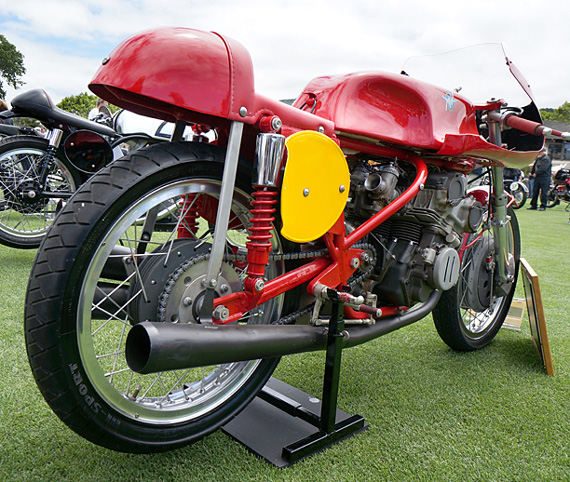
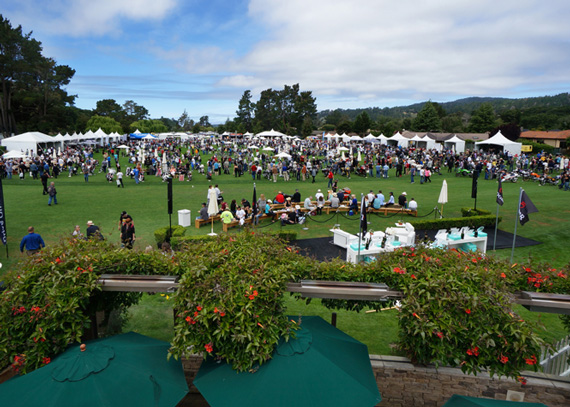
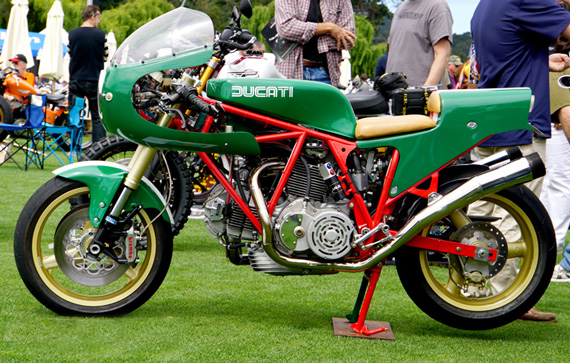
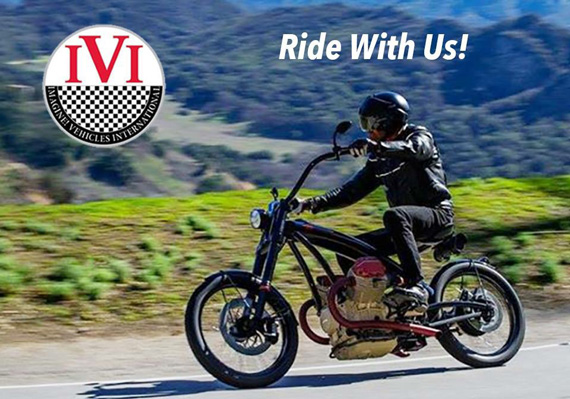
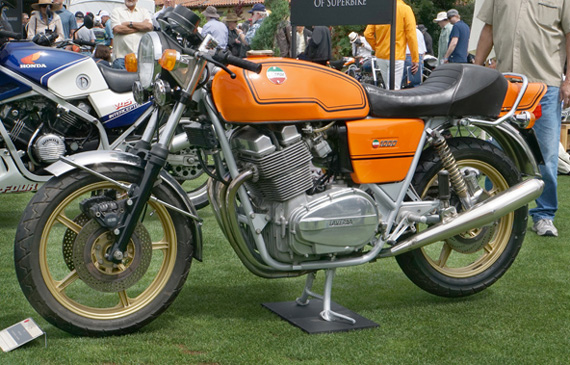
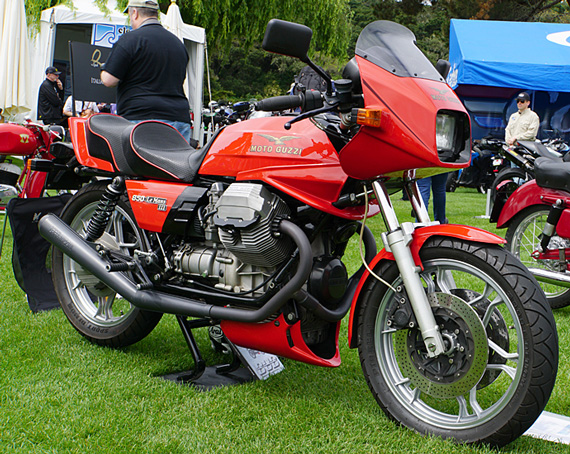
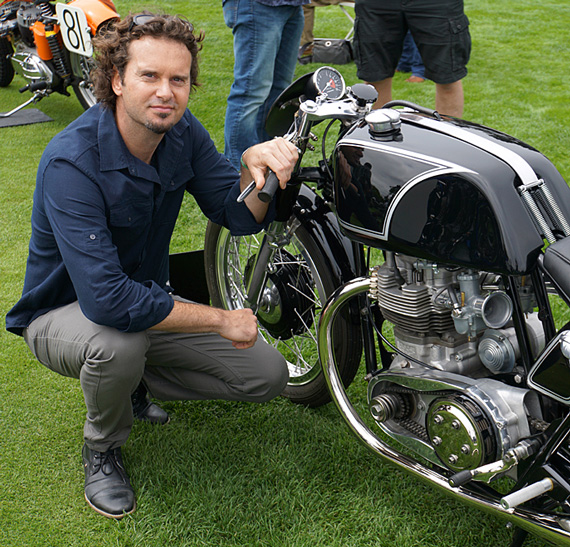
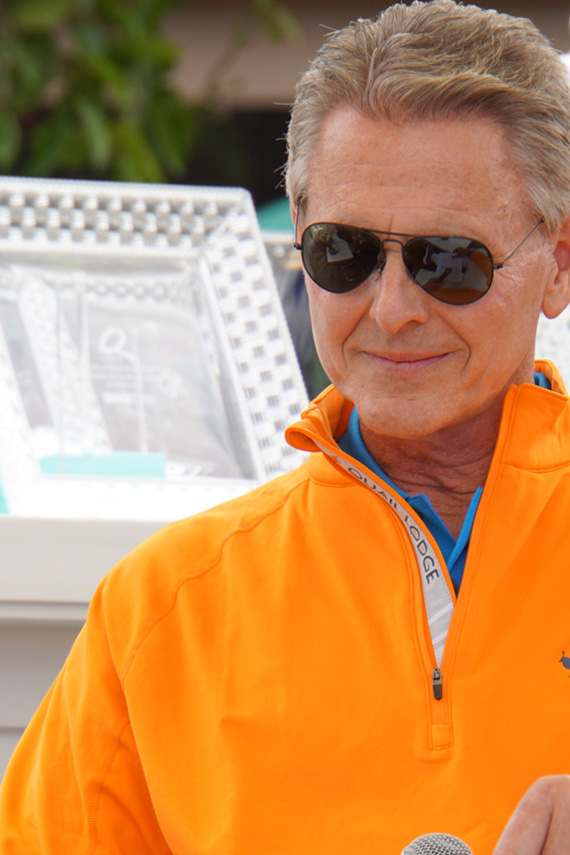
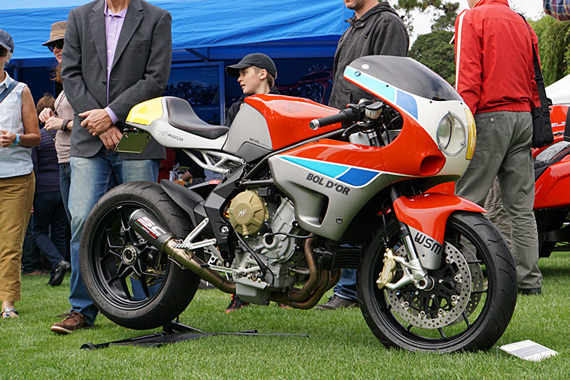
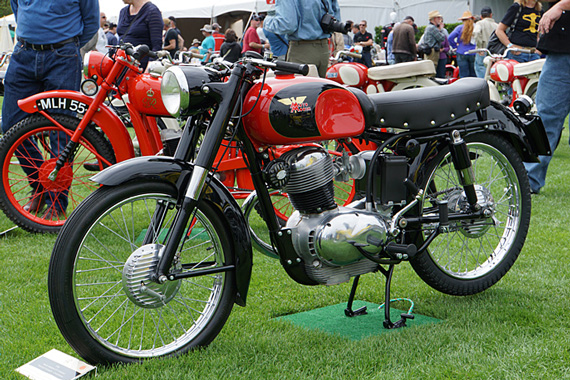
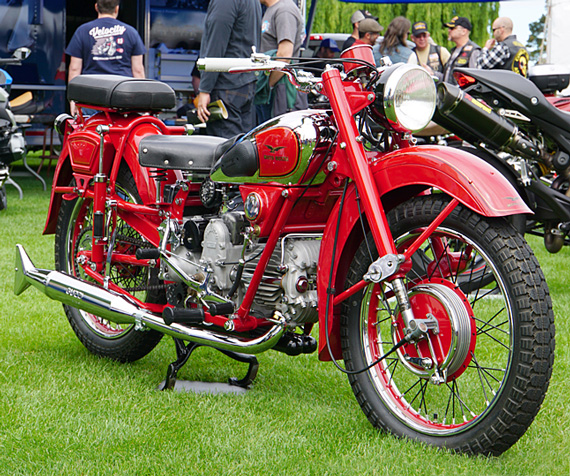
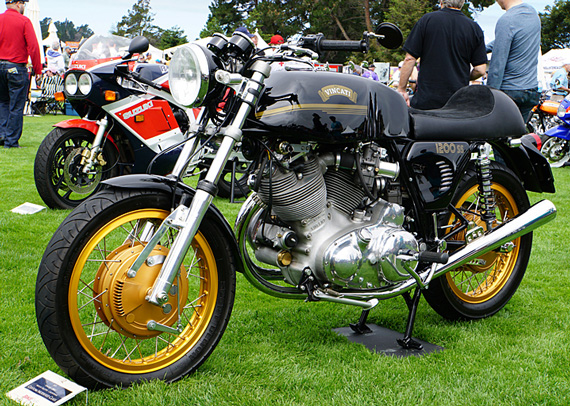
Let me get the fussing over with first! It’s MV Agusta, not Augusta. And Moto Morini, not Morino. And the 1931 Vincent 1200 is actually a Vincati 1200, that is a Ducati bevel twin frame with Vincent engine etc. But rare enough.
The Quail Motorcycle Gathering was wonderful! The Italian class was won by a Malaguti 50 Olympique – a wonderful bike – endorsing that indeed this show has something for everyone.
See you next year.
Typos fixed but the Vincati, well as you said, that’s a rare one.
Pete